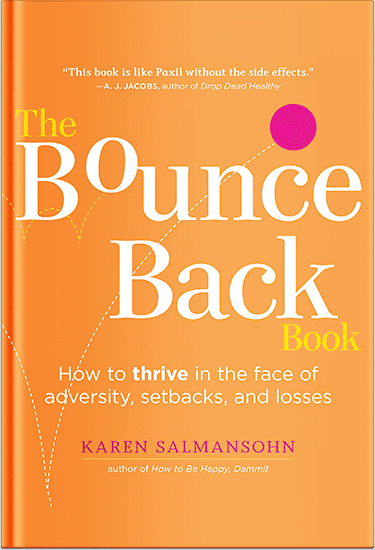
In this guide to taking care of your dog, you will explore the key aspects of dog care, from nutrition and exercise to grooming and training.
Imagine coming home to your dog’s happy barks and a tail that is wagging. He or she is looking forward to seeing you. As a dog owner, providing a loving and nurturing environment for your furry friend is essential for their well-being and happiness.
But taking care of a dog is more than just feeding and walking them. You also need to know what your dog needs and build a strong relationship with them.
Basic Needs of a Dog
There are some things that all dogs need in order to be healthy and happy. These requirements consist of love, food, water, and a place to live. A balanced diet is important for their health. Make sure to feed your dog high-quality food that is suitable for their age and size.
Additionally, in providing your dog with a well-rounded care routine, consider incorporating food supplements for your dog. Just as exercise and regular vet visits contribute to their health, supplements can fill nutritional gaps that may not be fully covered through diet alone. For guidance on choosing the right dog supplements and vitamins, consult reliable sources or pet nutritionists.
As hydration is of the utmost importance, fresh water should always be provided. Your dog also needs a comfortable place to sleep and relax. This could be a cozy bed in a quiet corner of your home. Finally, dogs thrive on love and companionship, so spend time with them daily to build a strong bond.
Regular Veterinary Care
It is essential for the health of your dog to receive routine veterinary care. Just like humans, dogs need check-ups to stay healthy. Schedule annual visits to the vet for vaccinations and health exams. Your vet can detect health issues early, making treatment easier.
Also, keep up with flea, tick, and heartworm prevention. These pests can harm your dog if not treated. If your dog shows signs of illness, such as coughing or not eating, visit the vet as soon as possible. Maintaining your dog’s health and happiness requires routine visits to the veterinarian.
Exercise and Mental Stimulation
Dogs need regular exercise to stay fit and happy. Daily walks are essential for their physical health. Exercise helps prevent obesity and reduces behavioral issues.
Depending on the breed, dogs may require different amounts of exercise. For example, active breeds like Border Collies need more playtime than smaller breeds.
In addition to engaging in physical activity, it is essential to engage in mental stimulation. Play games like fetch or hide-and-seek to challenge your dog’s mind. Toys that are puzzles and also give them treats are another way to keep them interested. A well-exercised and mentally stimulated dog is usually calmer and more content.
Training and Socialization
 Training is an important part of dog ownership. As soon as you bring your dog home, you should immediately begin training them. Teach basic commands like sit, stay, and come. Good behavior can be encouraged through the use of positive reinforcement, such as praise and treats.
Training is an important part of dog ownership. As soon as you bring your dog home, you should immediately begin training them. Teach basic commands like sit, stay, and come. Good behavior can be encouraged through the use of positive reinforcement, such as praise and treats.
Socialization is equally important. Expose your dog to different people, places, and other animals. This helps them become well-adjusted and confident. Take them to dog parks or arrange playdates with other dogs. Proper training and socialization can prevent behavioral issues and make outings more enjoyable.
Grooming and Hygiene
When it comes to your dog’s health and comfort, grooming is absolutely necessary. Regular brushing removes loose hair and dirt from their coat. It also helps prevent matting, especially in long-haired breeds.
Depending on the breed, your dog may also need regular baths. Use dog-friendly shampoo and ensure they are dried properly afterward. Don’t forget about dental hygiene! Regular brushing of your dog’s teeth can help prevent dental disease from developing.
Additionally, check their ears and nails. Clean ears help prevent infections, while trimmed nails prevent discomfort. Keeping your dog well-groomed is key to their overall health.
Understanding Dog Behavior
Dogs communicate through body language and vocalizations. Pay attention to their signals, such as wagging tails or growling. A wagging tail usually indicates happiness, while growling may signal discomfort. Learn about your dog’s breed traits, as different breeds may have unique behaviors.
For instance, herding breeds may have strong instincts to chase. Knowing your dog’s personality helps you respond to their needs better. This understanding builds trust and strengthens your bond.
Creating a Safe Environment
Creating a safe environment is crucial for your dog’s well-being. You can make sure that your house is safe for your dog by removing potential hazards such as poisonous plants, small objects, and chemicals. Use baby gates to restrict access to unsafe areas, like stairs or kitchens.
When outside, always keep your dog on a leash or in a fenced area. This prevents them from running into dangerous situations. Provide safe dog toys that are appropriate for their size to avoid choking hazards. A safe environment gives you peace of mind and allows your dog to explore comfortably.
Avail of Dog Insurance
Insurance helps cover unexpected veterinary costs, making it easier to provide care when needed. Look for a plan that fits your budget and covers essential services like emergencies and routine care. Compare different providers to find the best coverage for your needs.
Having dog insurance gives you peace of mind, knowing you can provide your dog with the best care without worrying about costs.
Invest Time and Effort Into Caring for Your Dog
A well-cared-for dog is not only healthier but also happier, leading to a stronger bond between you and your furry friend. By prioritizing their needs, from nutrition and exercise to training and regular vet visits, you are ensuring they live a long, fulfilling life.
Enjoy Your Happiest Life
Explore my bestselling and therapist recommended audio and video program: The Anxiety Cure Course.
P.S. Before you zip off to your next Internet pit stop, check out these 2 game changers below - that could dramatically upscale your life.
1. Check Out My Book On Enjoying A Well-Lived Life: It’s called "Your To Die For Life: How to Maximize Joy and Minimize Regret Before Your Time Runs Out." Think of it as your life’s manual to cranking up the volume on joy, meaning, and connection. Learn more here.
2. Life Review Therapy - What if you could get a clear picture of where you are versus where you want to be, and find out exactly why you’re not there yet? That’s what Life Review Therapy is all about.. If you’re serious about transforming your life, let’s talk. Learn more HERE.
Think happier. Think calmer.
Think about subscribing for free weekly tools here.
No SPAM, ever! Read the Privacy Policy for more information.
One last step!
Please go to your inbox and click the confirmation link we just emailed you so you can start to get your free weekly NotSalmon Happiness Tools! Plus, you’ll immediately receive a chunklette of Karen’s bestselling Bounce Back Book!



 Training is an important part of dog ownership. As soon as you bring your dog home, you should immediately begin training them. Teach basic commands like sit, stay, and come. Good behavior can be encouraged through the use of positive reinforcement, such as praise and treats.
Training is an important part of dog ownership. As soon as you bring your dog home, you should immediately begin training them. Teach basic commands like sit, stay, and come. Good behavior can be encouraged through the use of positive reinforcement, such as praise and treats. 